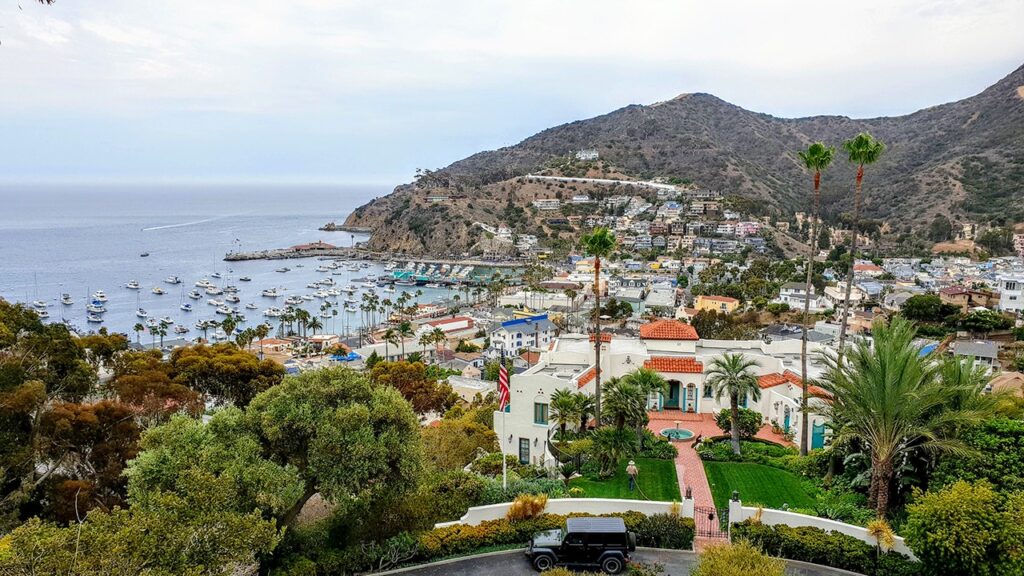
Santa Catalina Island, once a hideaway for smugglers, has turned into a restful vacation spot.
by John Bagnasco
It was inhabited for hundreds of years by Native Americans and then was claimed by Spain and subsequently became part of a Mexican land grant from Pio Pico to American Thomas Robbins in 1846. The island changed hands several times until its purchase by the Banning brothers in the late 19th century when they planned to develop the island as a resort. They were responsible for much of the rise of Avalon, the only incorporated city on the island.
In 1919, William Wrigley, Jr. acquired a major interest in the Bannings’ Santa Catalina Island Company and implemented a series of measures to ensure that most of Catalina Island would remain in its natural state. He was responsible for public utilities, the Casino ballroom, a hotel and large-scale landscaping of trees, shrubs and flowers around the Avalon area. Wrigley also spearheaded the protection of watersheds, animal controls and reseeding of overgrazed areas, since Spanish explorers and early settlers had introduced grazing animals who damaged the island’s native plants.
This conservation intensified over the years and in 1972, members of the Wrigley family established the Santa Catalina Island Conservancy, a non-profit organization dedicated to the conservation and preservation of Catalina Island. It now oversees about 88% of the island and is supervising restoration and replanting native grasses and trees and other conservation activities. August and September are perfect months to visit the island.
The nearly 38-acre Wrigley Botanical Garden lures scientists and horticulturists from around the world, who come to see a collection that includes plants native only to the island, including Catalina Ironwood (Lyonothamnus floribundus), Catalina Manzanita (Cercocarpus traskiae), Wild Tomato (Solanum wallacei) and Catalina Live-Forever (Dudleya hassei), the only succulent endemic.
